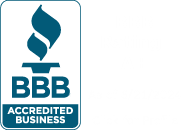Last updated on: May 20, 2025
A well-managed board is one of the most critical factors for the success of any nonprofit organization. The board of directors is responsible for guiding the nonprofit’s mission, ensuring financial health, and providing strategic oversight. However, managing a nonprofit board effectively can be challenging, especially as board members are often volunteers balancing multiple commitments.
Today, we’ll discuss three major tips to help your nonprofit develop a productive, engaged, and effective board of directors, successfully.
1. Set Clear Roles and Expectations
One of the most common challenges nonprofit boards face is the lack of clarity around roles and responsibilities. Without clear expectations, board members may either become too hands-off or too involved in the day-to-day operations of the organization, leading to friction or inefficiencies.
How to Achieve Success:
Create a Board Handbook: Outline each member’s role, including duties related to governance, fundraising, and financial oversight. This handbook can serve as a guide to help new members acclimate and existing members stay aligned.
Develop Job Descriptions: For key roles such as board chair, treasurer, and secretary, clear job descriptions ensure that everyone knows their responsibilities and can hold each other accountable.
Set Participation Expectations: Ensure that all board members are aware of expectations regarding meeting attendance, fundraising involvement, and overall participation. This can be done during onboarding or through annual evaluations.
2. Prioritize Board Engagement and Development
An engaged and informed board is key to driving your nonprofit’s mission forward. Unfortunately, many organizations struggle with disengaged board members who show up for meetings but fail to actively contribute outside of those sessions. Fostering an engaged board starts with ongoing education and creating opportunities for development.
How to Achieve Success:
Ongoing Education: Offer regular training on nonprofit governance, fundraising strategies, and compliance issues. This keeps board members informed about best practices and empowers them to make educated decisions.
Build Relationships: Board members who feel connected to the organization are more likely to stay engaged. Schedule social events or retreats that allow board members to bond with each other and the organization’s staff.
Involve Board Members in Strategic Planning: Encourage board members to actively participate in the organization’s long-term strategy. When they have a direct hand in shaping the nonprofit’s future, they’ll be more motivated to contribute.
3. Ensure Accountability and Transparency
For a board to be truly effective, it must operate with a high degree of transparency and accountability. This not only strengthens the board’s governance but also builds trust with donors, staff, and the public.
How to Achieve Success:
Financial Oversight: Board members are responsible for the financial health of the organization. This includes reviewing financial statements, overseeing annual audits, and ensuring that the nonprofit remains compliant with IRS regulations. Regular financial training for board members can help them understand the organization’s finances more deeply.
Regular Performance Reviews: Conduct evaluations not only for the board as a whole but also for the executive director and other key staff. This ensures that leadership is meeting its goals and provides an opportunity for constructive feedback.
Promote Transparency: Share meeting minutes, financial reports, and strategic plans with all board members. Keeping everyone in the loop fosters a culture of accountability and openness, which ultimately leads to better decision-making.
Pro Tips for moving forward
Pro Tip: Conduct regular board evaluations to ensure that members are fulfilling their duties and that the board as a whole is performing effectively. This feedback loop allows for adjustments as needed to keep the board operating at its best.
Pro Tip: Consider forming committees within the board that align with members’ interests and strengths. Whether it’s fundraising, governance, or advocacy, committees allow board members to dive deeper into specific areas, increasing both their engagement and their contributions.
Pro Tip: Establish a clear conflict-of-interest policy and have every board member sign it annually. This policy ensures that board members act in the best interest of the organization and avoid any potential conflicts that could undermine the nonprofit’s mission.
Conclusion
Effective board management is essential to the long-term success of any nonprofit. By setting clear roles, engaging board members, and ensuring accountability and transparency, your organization will build a strong foundation for governance that drives your mission forward. Remember, a well-managed board doesn’t just provide oversight—they become champions for your cause, helping to secure funding, advocate for your mission, and support long-term sustainability.
Is your nonprofit looking to strengthen its board management practices?
At BryteBridge Nonprofit Solutions, we offer comprehensive board development and governance consulting services to help your organization maximize its board’s potential. Our experts provide tailored training, strategic planning, and best practices to ensure your board is equipped for success. Speak to a BryteBridge Consultant today by calling 877-857-9002 to learn more!



